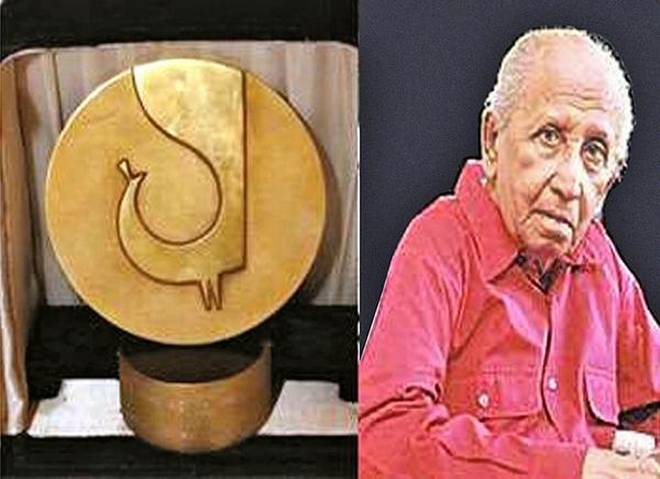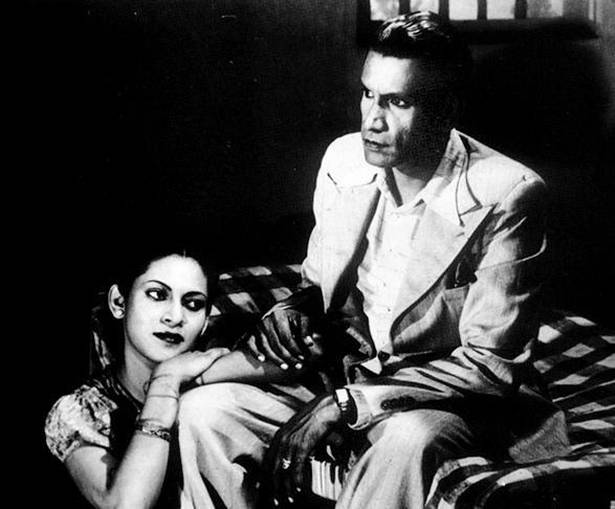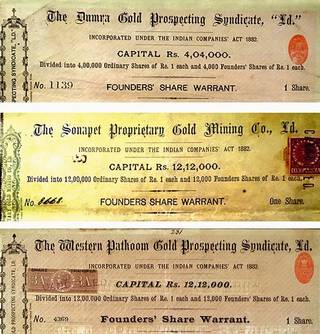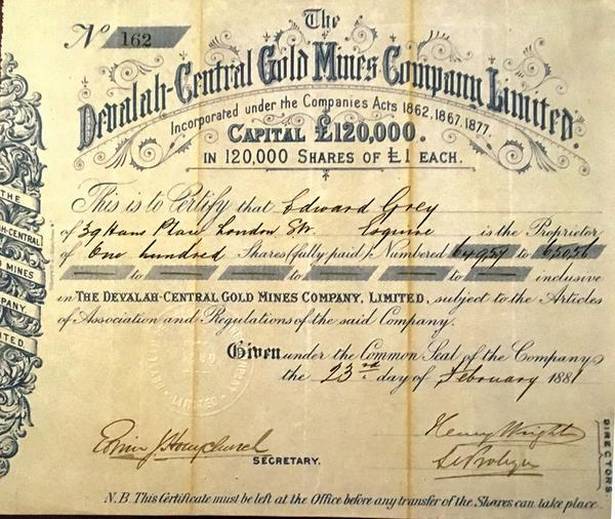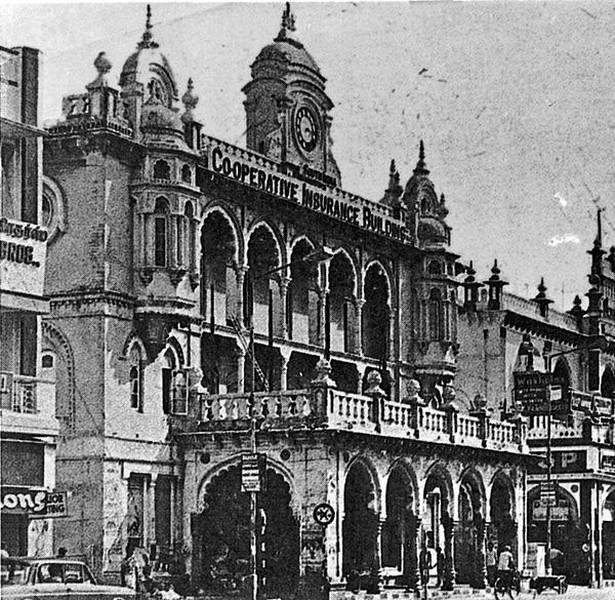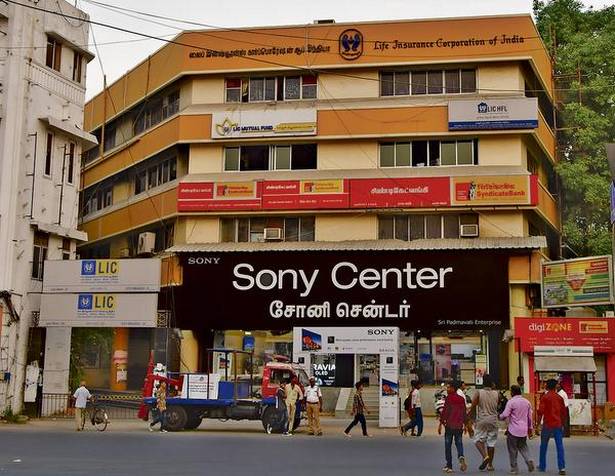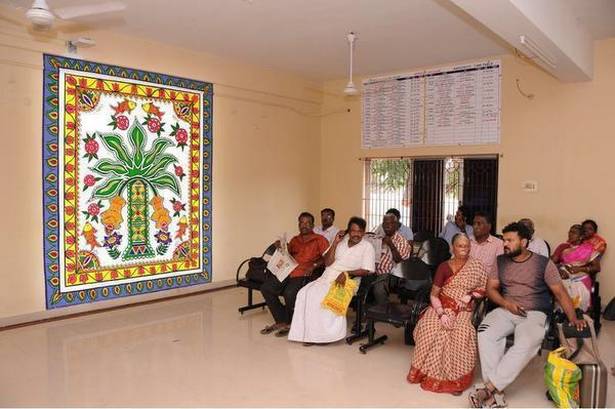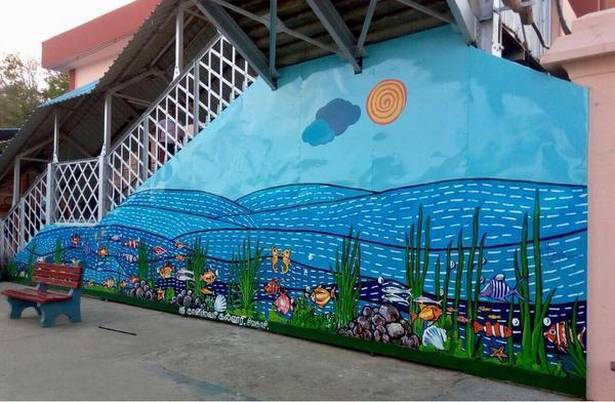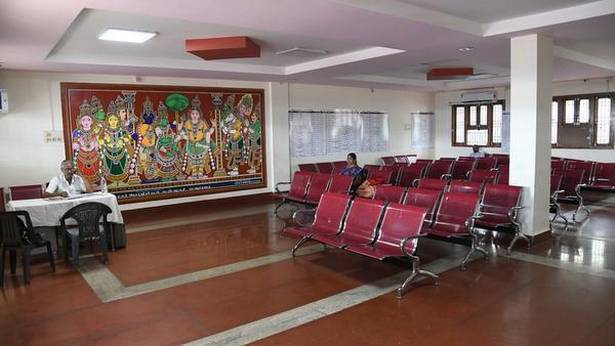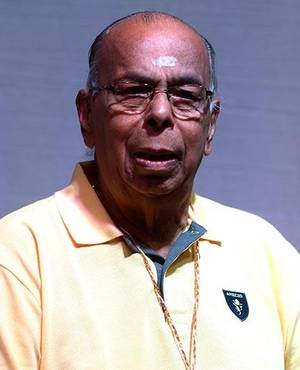Monthly Archives: May 2018
Lester and Ceylon’s films
The death of Lester James Peiris, the father of the ‘New Sinhala Cinema’, brings back to mind his winning in 1965, with his Gamperaliya (The changing village; 1963), the first Golden Peacock awarded and for taking Sinhala film-making not only out of Madras State studios but away from the clichétic Tamil film formula.
Lester was the London Correspondent of The Times of Ceylon when I was its Foreign News Editor in the 1950s. We were in regular touch during that period, when he was experimenting with film-making. When he returned to Ceylon he opted out of journalism and focused on cinema — first with government documentaries and then the making of a new kind of Sinhala film, one drawing inspiration from the realism of Italian and French films. We kept in touch, however, because Iranganie Serasinghe and Sita Jayawardana were two of his leading supporting actresses, both girls who worked with me in features and who were forever asking for time off for ‘shooting’ or who kept dozing after ‘night shoots’. But when I moved to Madras I lost touch with Lester whom many consider one of the greatest South Asian film-makers.
Lester made 20 full-length feature films and about a dozen documentaries and short films. He started with a winner, Rekawa (Line of Destiny, 1956), which focused on village life. It was the first Sinhala film to be shot entirely in the country and the first to be shot mainly outdoors. It was nominated for the Palme d’Or at the 1957 Cannes Film Festival. Gamperaliya, for its part, was shot entirely outside the studio. Besides the Golden Peacock, it also won Mexico’s top international film festival award.
The first Sinhala film to be made, Kadavanu Porundhuva (Broken Promise), was shot entirely in Madras and released in Colombo on January 21, 1947. It was produced by S M Nayagam, who was what they called in Ceylon an Indian Tamil (being from the Tamil districts of Madras Presidency) and who not only pioneered the making of Sinhala films but also the starting of local industries. The film was directed by a Bengali, Joti Sinha. This was followed by 42 other Sinhala films being made in Madras, Coimbatore and Salem. It was only in the 1950s that Sinhala films began to be made in Colombo, where Nayagam had established the first studio. But even then, till legislation in the late 1950s, technicians from Madras continued to work in Ceylon — and the generation of Sinhala technicians who followed them benefited considerably from their mentoring.
One of the earliest from Madras to direct Sinhala films was Anthony Bhaskar Raj. Lenin Moraes was another director from Madras where he had learnt cinematography and make-up. J A Vincent was Art Director for over 100 Sinhala films after starting out with Asokamala being made in Central Studios, Coimbatore. Another connected with Asokamala was experienced cameraman Mohamed Masthan who also shot Sujatha in Salem. When he moved to Ceylon, he was guru to a generation of Ceylonese cameraman. He later went into direction. Other directors from Madras to work in Ceylon included A S A Samy, P Neelakantan, L S Ramachandran who pioneered Sinhala films on village life, and A S Nagarajan. After having been a scriptwriter in Madras, Nagarajan moved to Ceylon and into direction. Among his films was Mathalan, based on the Tamil hit Mangamma Sabatham.
Starting from where the Madras technicians left off, Lester James Peiris gave a completely new face to the Sinhala film industry. R.I.P., Lester.
________________________________
They mined for diamonds too
My scrip-collecting correspondent, Sayeed Cassim, has sent me some fascinating material, responding to my gold rush story (Miscellany, April 23). The best of it is a share certificate issued by the Devalah (Devala) Central Gold Mines Company Limited in 1881. This was one of the first companies to be established— even before the gold rush began — and, as I had recorded, it was promoted by Parry & Co, though the certificate (my enlarged picture today) gives no indication of that.
Accompanying it are the headings of three other certificates, those issued by the Western Pathoom Gold Prospecting Company Limited, the Sonepat Proprietary Gold Mining Company Limited, and the Dumra Gold Prospecting Syndicate Limited. Having made a study of these three certificates, Sayeed Cassim feels that “these were companies set up only to rake in the money and hoodwink the public.” He bases his presumption on the fact that there are several identical features in these certificates which “make their intentions suspicious”. He lists the following:
Similar authorised capital of each of these companies:
Date of all issues very close together in 1890
Printer the same: Calcutta Catholic Orphan Press;
Per value of each share only one rupee (to induce greater subscription?), and
Certificates of Western Pathoom and Dumra signed by the same person.
But that is not all. Apparently there were optimists who thought that there were diamonds in the hills too and companies were formed to prospect for them. He names The Madras Diamond Mining Company Limited and The Madras Presidency Diamond Fields Limited. Were they genuine speculators or in it for the quick buck?
If you want to take a better look at these certificates, Sayeed Cassim suggests you have a look at the website of David Barry of London (www.indianscripophily.com), who has “the largest and finest collection of Indian share certificate in the world.”
The chronicler of Madras that is Chennai tells stories of people, places, and events from the years gone by, and sometimes from today.
source: http://www.thehindu.com / The Hindu / Home> Society> History & Culture> Madras Miscellany / by S. Muthiah / May 14th, 2018
15
Remembering Lakshmi Ratan
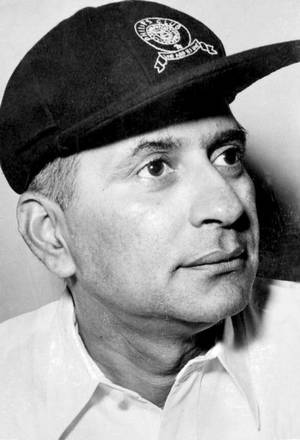
V.R. Lakshmi Ratan, whose birth centenary falls on Saturday, is regarded as one of the pioneers in promoting corporate involvement in cricket in Madras (as Chennai was called then).
His initiative provided employment for many talented players such as Test cricketer, V.V. Kumar and State cricketers — P.R. Sundaram, A.K. Sarangapani, and Rajasekhar Shetty.
Lakshmi Ratan, then Secretary of the Madras Cricket Association (1938-40/1951-52), also was the architect behind the launch of The Sport and Pastime Trophy (now, The Hindu Trophy) – a popular, 30-overs-a-side tournament sponsored by The Hindu Group in 1950-51.
Born in 1912, Naina (as Lakshmi Ratan was affectionately called) became fond of the ‘gentleman’s game’ at an early age. In due course, he started two city clubs – Minerva and Eccentrics.
Recruiting players
Lakshmi Ratan joined Philips India as Regional Manager after his family business was shut down in the early 50s. He led the team there and began recruiting cricketers for the company.
“When my father ran Minerva and Eccentrics, he observed that some of the players from poorer financial backgrounds would use the opportunity to overeat during lunch at matches. He felt it was a sad situation, and realised the importance of job-security for these players. After joining Philips, he took the lead in hiring cricketers,” said Ramesh, son of Lakshmi Ratan.
Lakshmi Ratan also took his teams on tours to Bombay, Calcutta, and Ceylon among other places, providing greater exposure to the players. “I have seen my father taking teams on tours at his own expense. He was proud of his team and when V.V. Kumar was selected to play for India, he was very excited,” said Ramesh.
Kumar, on his part, remembers Naina as a humble and caring person. “Along with the likes of J.A. Allerton of Parrys, Naina was one of the pioneers in recruiting sportsmen. The idea of taking players on tours started during Naina’s time. He would never miss a match and remembered every player’s performance. Although he was strict, he wouldn’t throw his weight around. The whole team was one family and Naina would throw parties whenever we won games. His wife, Swarnam, was a great hostess too,” said Kumar.
Walked with legends
Lakshmi Ratan’s relationship with legends such as Vijay Merchant and Vinoo Mankad is well-documented. In those days, cricketers didn’t stay in hotels and would be lodged in houses of welcoming hosts. Merchant and Mankad used to stay with Lakshmi Ratan whenever they visited Madras.
“I was quite young then but I remember Merchant and Mankad staying at our place in Santhome. My father was close to the entire Merchant family. He also shared a good rapport with many Sri Lankan cricketers such as M. Sathasivam,” said Ramesh.
Lakshmi Ratan had stopped watching cricket towards the latter period of his life as he felt indiscipline had permeated into the game. “My father always had a reputation for being a great administrator and gentleman.
“That his conduct is talked about in glowing terms even today is testimony to his personality,” said Ramesh.
Lakshmi Ratan passed away on February 25, 2005.
source: http://www.thehindu.com / The Hindu / Home> Sport> Cricket / by Arun Venugopal / July 14th, 2012
12
The Tawkers of Madras
Thanks to that recorder of the stories of famous old houses in Madras, Sriram V, I recently discovered where a once-legendary old family of Madras, the Tawkers, had their mansion. After passing out of the Tawker hands into Government’s hands in 1925, it became the residence of the Rajah of Panagal (pronounced Paanagal) when he was the Premier of Madras. He stayed there till 1928. Tawker’s Gardens then became Limbdi Gardens, when the Raja of Limbdi (in Gujarat) acquired it. Next we find the University of Madras renting it in the 1930s for some of its departments and staying there till 1948 when it was auctioned. The buyer was the Muslim Educational Association of South India (MEASI) and there it developed in the 12-acre campus on Peter’s Road what is today New College, a name inspired by an eponymous one in Oxford. The college opened in 1951.
The Tawkers were one of the earliest Gujarati families to settle in Madras, moving here from Trichinopoly in the early 18th Century. In time, they were to become the leading gem and jewellery merchants in South India, under the name TR Tawker and Sons from 1761. As befitting their status they had Henry Irwin design a palatial headquarters building for the firm on Mount Road. The Indo-Saracenic-styled building was built in the 1890s by T Manavala Chetty, a leading contractor. The Tawker Building, like Tawker’s Gardens, passed out of the family’s hands when the firm’s dues from many of the leading citizens of the South, particularly the Nizam of Hyderabad (or, rather, his estate when he died), were not paid, leading to bankruptcy in 1925.
Tawker’s Building, next to what is now VGP’s main showroom on Mount Road (but once Victory House, home of the then leading Tamil daily, Swadesamitran), after its sale, became the property of the Maharajah of Venkatagiri in 1926. It next passed into the hands of Kasturi Estates (The Hindu family) in 1931. The South India Cooperative Insurance Company bought it in 1948 as its headquarters and when insurance was nationalised it became LIC property. In 1953, the year Indian Airlines started, its Madras office moved into a part of this spaciousness. Indian Airlines remained there till 1980 before it moved out whereupon the building, an architectural heritage building if ever there was one, was pulled down by the LIC and a mundane highrise took its place, now housing several offices.
The philanthropy of the Tawkers was legendary. Two women of the family, Ramba Bai and Ratna Bai, set up a trust in 1804 and the next year built the Sri Kasi Viswanathar Temple in Ayyanavaram. Other charities they endowed included building a choultry, now an agraharam, next to the temple. The Tirupati umbrellas taken to the Seven Hills from Madras are traditionally kept in this temple for one night before their onward journey. Trichy is also a place that has benefited from Tawker munificence.
There are still Tawkers in Madras, but the name no long creates the awe it once did.
__________________________________
The coffee blight
The news that the White Stem Borer (WSB) is back, threatening the three major coffee-producing districts of Karnataka; Kodagu, Chikmagaluru and Hassan, causing them to be declared “pest affected areas”, took my mind back to the horror stories I had read dating to when Leaf Blight / Leaf Rust and the Borer wiped out the coffee plantations of Ceylon and those in the Nilgiris-Wynaad. A South Indian planter wrote in 1896, “In all these once beautiful plantations, complete desolation now reigns…The destruction came in gradually from 1864-65, first by borer (1868) and completed by leaf disease (from 1875) caused by Hemileia vastatrix…The destruction that went on before one’s eyes would have to be seen to be believed.” Another writer wrote of the disaster, “Acre after acre, mile upon mile died out and what were once happy valleys became valleys of dry bones and there was no hope of resurrection.” But resurrection though there was. Anon.
Ceylon started planting coffee before South India, though there were small coffee gardens in Mysore State and Coorg long years before the 1830s when George Bird opened up the first coffee estate in the Island. By the 1860s, coffee was driving Ceylon’s economy. It was from those estates that the blight slowly spread into the Nilgiris. In South India, coffee on estate scale was first planted in 1798 by Murdoch Brown in Anjaracandy in North Malabar, but the effort did not take off. It was in the 1840s and 1850s that venturesome Europeans got into growing coffee on plantation scale. By 1870, there were 20,000 hectares of coffee in Mysore planted by Europeans from 1854 and producing 6,000 tonnes. However, in the same territory, there were nearly 28,000 ‘Native plantations’ with an area of 80,000 hectares and producing around 9,000 tonnes. Much of this escaped the coffee blight, whose spread from the Nilgiris was, fortuitously, slow. Coffee planting in the Nilgiris by “enthusiastic lunatics” began in the late 1850s and by 1863-64 there were 40 estates.
Resurrection came when Ceylon planters who had not sold their estates for a passage home began experimenting with tea in 1867 and made a success of it by the 1870s. South Indian tea, on the other hand, was slow to take off. The gold rush (Miscellany, April 23) was one of the reasons. It was not till James Finlay’s developed the Kannan Devan High Range that tea began to make slow but steady progress till South India became the major tea producer it is today. Its slow beginnings were in 1854 in Coonoor, on Thiashola estate, southwest of Coonoor. Post-Second World War, the tea industry in South India has boomed but despite ups-and-downs, it is one of the healthiest industries in the country. So is coffee today.
The chronicler of Madras that is Chennai tells stories of people, places, and events from the years gone by, and sometimes from today.
source: http://www.thehindu.com / The Hindu / Home> Society> History & Culture> Madras Miscellany / by S. Muthiah / May 07th, 2018
10
Adding colour to train journeys
The Madurai railway junction has been adjudged the second most beautiful station in the country and behind the laurel is the efforts of two local artists
The side-wall of the escalator on the second platform inside Madurai railway junction, presents a picturesque and colourful painting. The imposing wall of 60 feet by 23 feet depicts a scene from rural Tamil Nadu, replete with bucolic paddy fields, farmers, huts, rolling mountains and lush greenery. The painted wall has become an attraction for passengers who pause to take a look at the grand and elaborate piece of art. Similarly, a two-dimensional mural measuring 14feet by seven feet adorns the wall inside the AC waiting hall on the station’s first platform. The mural painted in the Tanjore style of painting showcases the event of Meenakshi Tirukalyanam and has added a tinge of colour to the hall.
In a bid to beautify one of the biggest railway junctions in the region, the management roped in arists A Kannan and G K Ramesh to do up some art in strategic places inside the station. “It’s part of the ongoing project by Ministry of Railways. The idea is to showcase local talent in beautifying the place.” says Neenu Ittyerah, Divisional Railway Manager, Madurai Division. In a contest held recently in which 68 stations took part, the Madurai junction has won the award of second most beautiful railway station in the country, along with Madhubani station of East Central Railways. The first prize is won by Chandrapur and Ballarshah stations of Maharashtra. “It took quite an effort to decide on what and how to paint. We wanted to have some variety so we decided to paint two different things in different styles. Station art is evolving as a genre in itself and has to be big, bold and visible. Hence, we chose the escalator wall and the waiting hall. While the first one was based on a generic theme and made in a modern poster-art style, the second one was traditional Tanjore painting choosing a theme that’s typical of Madurai and what better than Meenakshi Kalyanam, as the event is celebrated by the entire town.”
A Kannan, who works as art teacher in TVS Matriculation School, Palanganatham and his team of assistants worked for over 10 days to complete the painting on the escalator wall. “I have used enamel paint and a combination of soothing cool colours. Since the base colour of the corrugated tin wall was blue, I retained a blue background. We had to build a scaffolding to reach to the height and chalk out a graph, so that the painting can be done to scale,” says Kannan, who has contributed in the Madurai corporation’s beautification projects previously. He has painted the pillars beneath the Kalpalam bridge and the wall around Gandhi Museum. “That’s how I got the opportunity to paint the station as well. I enjoyed the process and I am happy that my work has earned the place the distinction.”
The mural art is done by GK Ramesh, Stapati belonging to Sirkazhi. Having painted some of the famous and big temples across the state, Ramesh is an expert in Temple Art. “I come from a family of temple artists and learnt it from my father. In 2009, I repainted the frescos on the ceilings and walls of Meenakshi Temple. That’s how I was recommended for drawing a mural at the station,” says Ramesh. “I have used acrylic paint and my style is inspired by Indian art before the period of Ravi Varma, characterised by flat two-dimensional figures,” says Ramesh. “Though I have showcased my skills in temples like Tiruparankundram, Pazhamudhircholai and Srivilliputtur, drawing at the railway station gave me a unique experience. I am grateful and glad that my art has bagged a national-level recognition.”
The other stations under Madurai Division that were beautified are Virudhunagar and Kovilpatti, where the side of a staircase and a wall have been painted respectively. “We nailed the brief and that’s one reason we got the prize. From the railways, we will continue to add art and value to stations. The next stations we will be working on are Rameshwaram and Kodai Road/Dindigul, as they attract heavy flow of tourists. In Kovilpatti, one of our staff has done a worli art and we encourage such initiatives,” says Ittyerah. “Railway stations need to look good for two reasons – one is that it’s a highly patronised public space and creating beauty outside home will instil a sense of ownership in people using the space. And secondly, railway junctions are places that leave an impression in the mind of every traveller. You also always take something from a station.”
Madurai Division
Madurai Division was formed on 16.05.1956 and it is the largest Division on Southern Railway with 1363.06 Route Kilometers, extending over 12 districts of Tamilnadu, viz., Madurai, Virudhunagar, Tirunelveli, Tuticorin, Dindigul, Theni, Sivagangai, Ramanathapuram, Pudukottai, Tiruppur, Coimbatore and Tiruchchirappalli and 1 district of Kerala, viz., Kollam.
The total BG line is 1298.80 km and 118.12 km is under gauge conversion ie.89.74 kms between Madurai and Bodinayakkanur.
The division has 99 block stations, 20 flag stations and 20 halt stations. The division is running 39 pairs of daily express trains and 45 pairs of non-daily express trains and 70 pairs of daily passenger trains and 4 pairs of non-daily passenger trains.
Madurai Junction
Madurai Jn. is a ‘A-1’ category station with an average earnings of Rs.37 lakhs per day and an average of 44 lakhs passengers are dealt per day. The station has six platforms, six UTS and eight PRS counters.
Number of trains dealt:
Express trains: 12 pairs of daily, five pairs of bi-weekly, three pairs of tri-weekly, one pair of quadruplet weekly and six pairs of weekly
Passenger trains: 13 pairs of daily
Bookings office, Food plaza, Catering stall, Retiring rooms, Water cooler, Automatic Water Vending machines, RO water plant, Waiting halls, Mother feeding centre, Escalators, Lifts, Wheel chairs and Pay and use toilets are the other facilities provided at the junction.
source: http://www.thehindu.com / The Hindu / Home> Society / by A. Shrikumar / May 11th, 2018
Comedian Neelu is no more
Known for his booming voice, he had made a mark both in films and stage plays
Comedian Neelu, remembered for his characteristic entry onto the stage and the screen, always humming a snatch from some Carnatic song, died here on Thursday after a prolonged hospitalisation. He was 82 and is survived by wife and two sons.
“The only time he did not make his typical entry was when he played the role of Yama. He had a great following among drama lovers in Chennai,” said stage actor A.R. Srinivasan, who had worked closely with Neelu.
Born Neelakantan, he did his graduation and post-graduation in Economics at R.K.M. Vivekananda College in the city. At school, he participated in the Scouts movement and acted in plays. Later, he joined the Triplicane Fine Arts Club. He later became one of the permanent faces of Cho Ramasamy’s Viveka Fine Arts troupe and its plays. “When we decided to stop staging plays taking into consideration our age, Neelu felt that he was still young and started acting with ‘Crazy’ Mohan’s troupe,” said Ambi, the younger brother of Cho Ramasamy and a close friend of Neelu since their college days, where they came together to stage plays. “He easily blended with any group and was ever ready to do any role. He would never project himself, but develop the character in such a way that people would start concentrating on him the moment he appeared,” said Mr. Ambi, who called on him on Wednesday at the hospital. He spoke both the Chennai dialect and the Brahminical dialect with equal ease.
“He did not know how to speak in a low voice. He would even convey secrets in his typical high voice,” said Mr. Ambi.
Even though he forayed into films and played a few memorable roles like Neelakantam in Gowravam and as advocate Appalachari, who loved cooking in Velum Mayilum Thunai, he did not make acting his full-time career (in all, he had acted in 160 films).
He was an employee of V.C. Swami and Company Private Ltd. “He would call us from Kolkata every day after he was transferred there. Finally, Cho convinced his employer to bring him back to Chennai,” he recalled.
A music lover
He was an ardent music lover and would not miss the concerts of his favourite singers, including T.V. Sankaranarayanan and Sanjay Subramanian. “I would always sit beside him at concerts and he used to explain to me the names of ragas. Later, I would happily boast of my new found musical knowledge to the singer,” said Mr. Srinivasan.
“He was a very positive person and enjoyed life. Even when I met him a day ago, he told me that the doctors had only amputated his leg and he could still live without it,” said Ambi.
Mr. Mohan said, “For the past 10 years, Neelu has been with Crazy Creations. It is a great loss. He has travelled the world with us. For the past 20 days, the troupe members have been with him at the hospital.”
source: http://www.thehindu.com / The Hindu / Home> News> Cities> Chennai / by B. Kolappan / Chennai – May 11th, 2018
Sathiyan to play for German club

Paddler says stint would help fine-tune the technical aspects of his game
Indian paddler G. Sathiyan has signed a one-year contract with German super division club, ASV Grunwettersbach Tischtennis.
Sathiyan said he will play for the club from August, after the Asian Games. The contract runs through May 2019.
Sathiyan, who is plying his trade in the Polish league, said playing in Germany can do a world of good for him. “The league in Germany is more strict, in terms of commitment for a number of matches to be played, the team combination etc, when compared to the league in Poland.
“It would be a great experience playing against the likes of Timo Ball, Simon Gauzy, Stefan Fegerl and Paul Drinkhall etc. It would help me in my aim of breaking into the top-20 in the world,” he told Sportstar, from Germany.
The Chennai paddler hopes the stint also goes a long way in fine-tuning the technical aspects of his game.
Showcase skills
“There are a lot of improvements to be made in terms of my service and receiving. My forehand attack looks aggressive and has improved.
Also, the German league involves playing a lot of matches. It is also a platform to showcase my skills and the mental aspect also improves, especially when you are playing close games. I hope I can make significant changes in these by playing in the league,” he added.
Sathiyan said the focus would also be on his fitness. “The physical fitness system is excellent in Germany. We have trainers who have sound knowledge on the demands of the game and also on fitness. Training in these circumstances would go a long way in improving my fitness,” he explained.
Sathiyan, while playing in the Polish league, has used the ASV Grunwettersbach Tischtennis club for training purposes.
“Since I train here, it was also easy for them to understand my game and select me,” he said.
He credited A. Sharath Kamal for his inputs on playing in the foreign leagues. “He is the first player to have played in these leagues. He is a great senior and his guidance is invaluable. He knows better and has guided me in taking the right steps in my career,” Sathiyan added.
source: http://www.thehindu.com / The Hindu / Home> Sport> Other Sports / by M Hari Kishore / Chennai – May 11th, 2018
